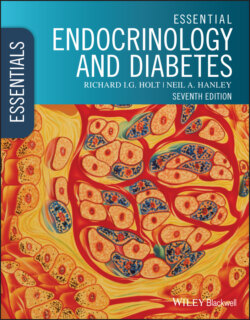Читать книгу Essential Endocrinology and Diabetes - Richard I. G. Holt - Страница 49
Nomenclature of steroidogenic pathways
ОглавлениеFigure 2.6 shows an overview of steroid hormone biosynthesis in human. Many of the enzymes that catalyze steps in these pathways are encoded by the cytochrome P450 (CYP ) family of related genes that is also critical for hepatic detoxification of xenobiotic compounds and drugs. Some of the enzymes are common to both the adrenal cortex and gonad (e.g. CYP11A1), whereas others are restricted and explain the distinct steroid profiles in each tissue (e.g. CYP21A2, needed for cortisol and aldosterone biosynthesis, is very largely limited to the adrenal cortex).
Historically, the enzymes have been named according to function at a specific carbon atom (e.g. hydroxylation), with a Greek letter indicating orientation above or below the four‐carbon ring structure (e.g. 17α‐hydroxylase attaches a hydroxyl group in the alpha position to carbon 17; Figure 2.6).
The common names used for steroids also adhere to a loose convention. The suffix ‐ol indicates an important hydroxyl group, as at the carbon‐3 position in cholesterol. The suffix ‐one indicates an important ketone group (testosterone). The extra presence of ‐di, as in ‐diol (oestradiol) or ‐dione (androstenedione), reflects two of the groups. ‘‐ene’ (androstenedione) indicates an important double bond in the steroid ring structure.
